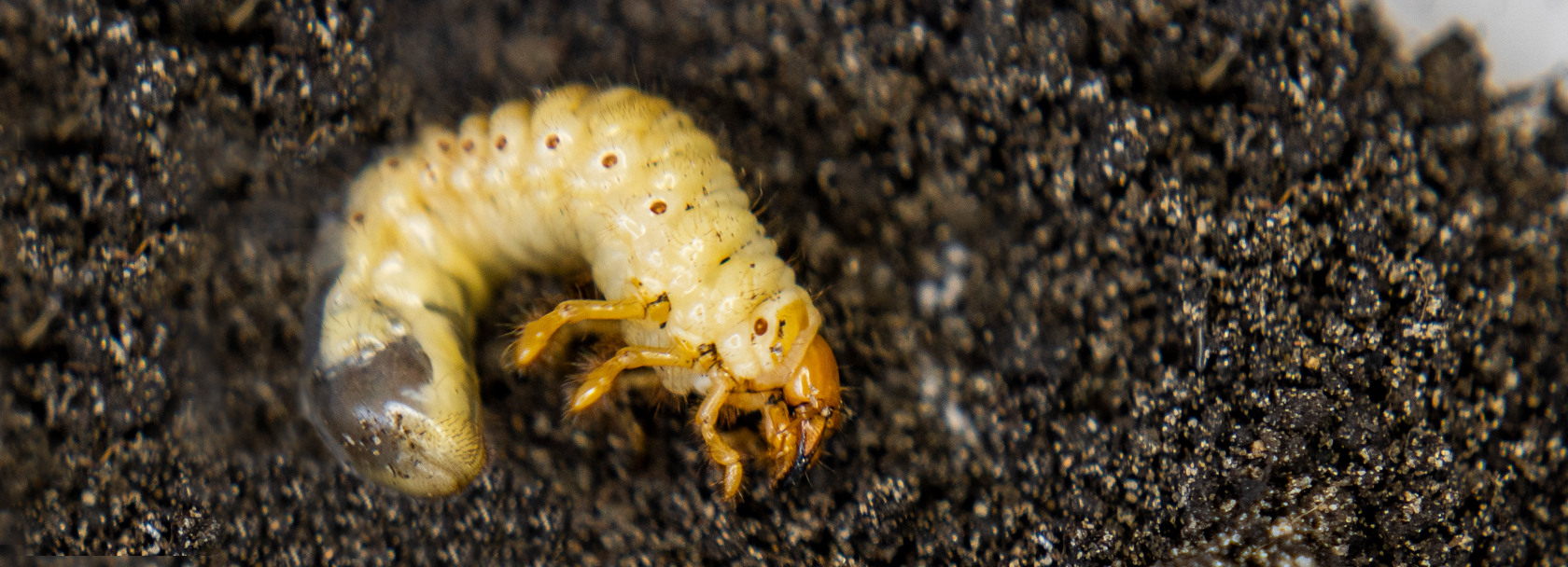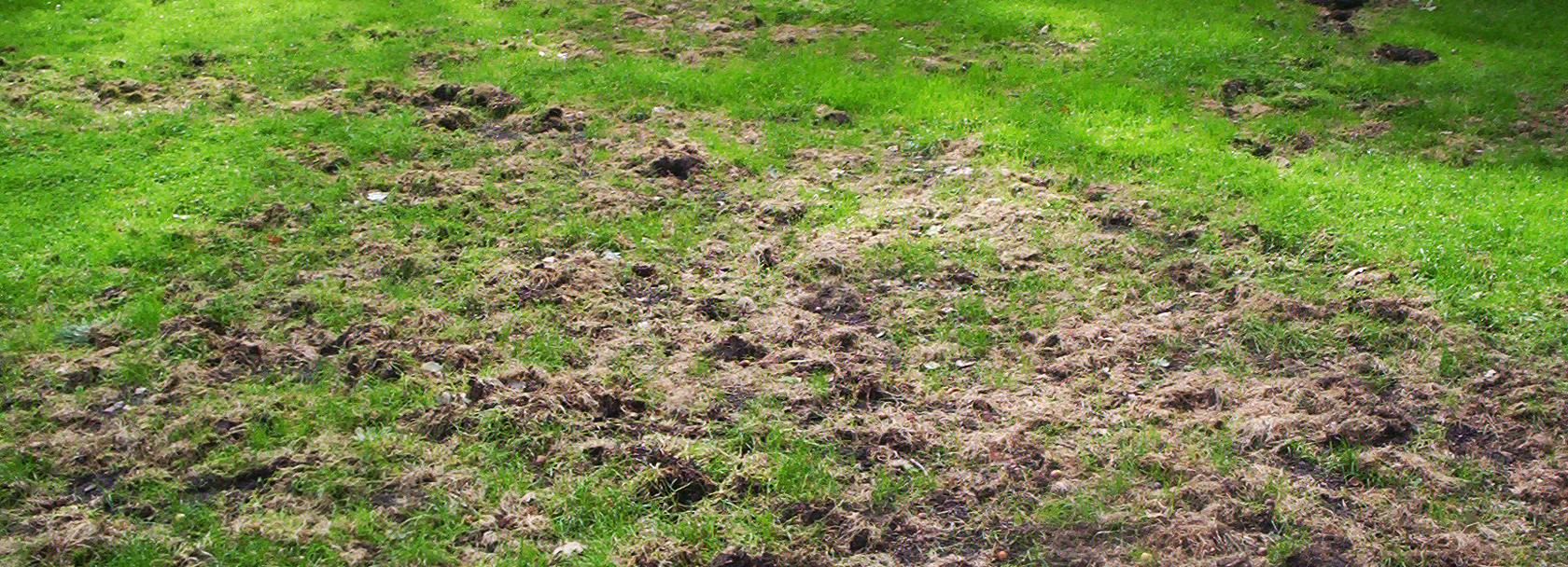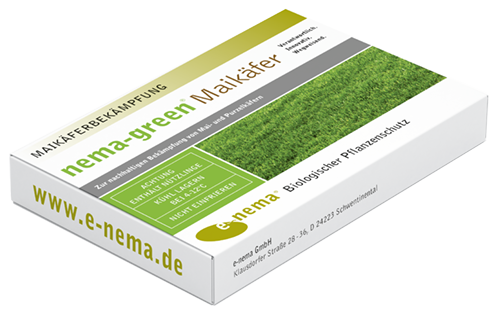Cockchafer
Control cockchafer biologically
Melolontha melolontha
The cockchafer belongs to the family of leaf-horned beetles (Scarabaeidae). The most widespread in Central Europe is the field cockchafer (Melolontha melolontha). The cockchafer grows up to 3 cm in size. Legs, antennae and elytra are reddish brown, the abdominal flanks are characteristically marked by white triangular spots. Also typical are the fans at the end of the antennae. May beetles fly in the evening at times when dandelions are in bloom.
Cockchafer grubs have whitish body and three pairs of legs and with brown head capsule. They can reach a length of 5-7 cm, which makes them much larger than grubs of other beetle species.

Life cycle of the cockchafer
A female cockchafer lays up to 70 eggs in various places, preferably in warm sunny soils - often in places where she hatched herself. The eggs hatch into grubs after four weeks, which remain in the soil for a total of three years. In July of the third year, the grubs pupate and overwinter as beetles in the soil. At the dandelion bloom of the next year, the cockchafer leave the ground, and after the flight they lay their eggs again. May beetles occur regionally in masses in certain cycles, infamous "may beetle years" occur every 3-5 years. Adult cockchafer cause damage to trees by feeding on leaves. Mass occurrence of the beetle results in bare tree crowns.
Damage caused by cockchafer grubs
May beetle grubs cause the greatest damage in the 2nd year through the 2nd larval stage. During this life stage, the grubs feed the most and cause plants to die within one growing season. Already 1-2 grubs per plant are sufficient for this. Lawns, vegetables, strawberries and blueberries, perennials, shrubs and trees are attacked. Birds pecking at the grubs can thus cause immense damage to the weakly rooted lawn.

Control cockchafer grubs with nematodes.
Nematodes are tiny, filamentous soil organisms about 0.6 mm long. They are natural enemies of the cockchafer. The nematode genera Heterorhabditis and Steinernema, among others, specialize on cockchafer grubs and can use them for their own feeding and reproduction. The nematodes are supplied alive in a powder. For application, they should be mixed with water exactly according to package directions and applied to the affected areas.
Which stages of the cockchafer can be controlled with nematodes?
Basically, control is difficult. The most sensitive are cockchafer grubs in the 1st larval stage. The smaller the grubs are, the better the effect. Under favorable conditions, up to 50% of the grubs can be killed.
Application period: April/May to August/September.
Two treatments should be carried out during this period: the first in April/May when the grubs are coming out of winter dormancy and are still weak, and a second in August/September against newly hatched grubs in the L1 stage. The treatment should be carried out two years in a row.
